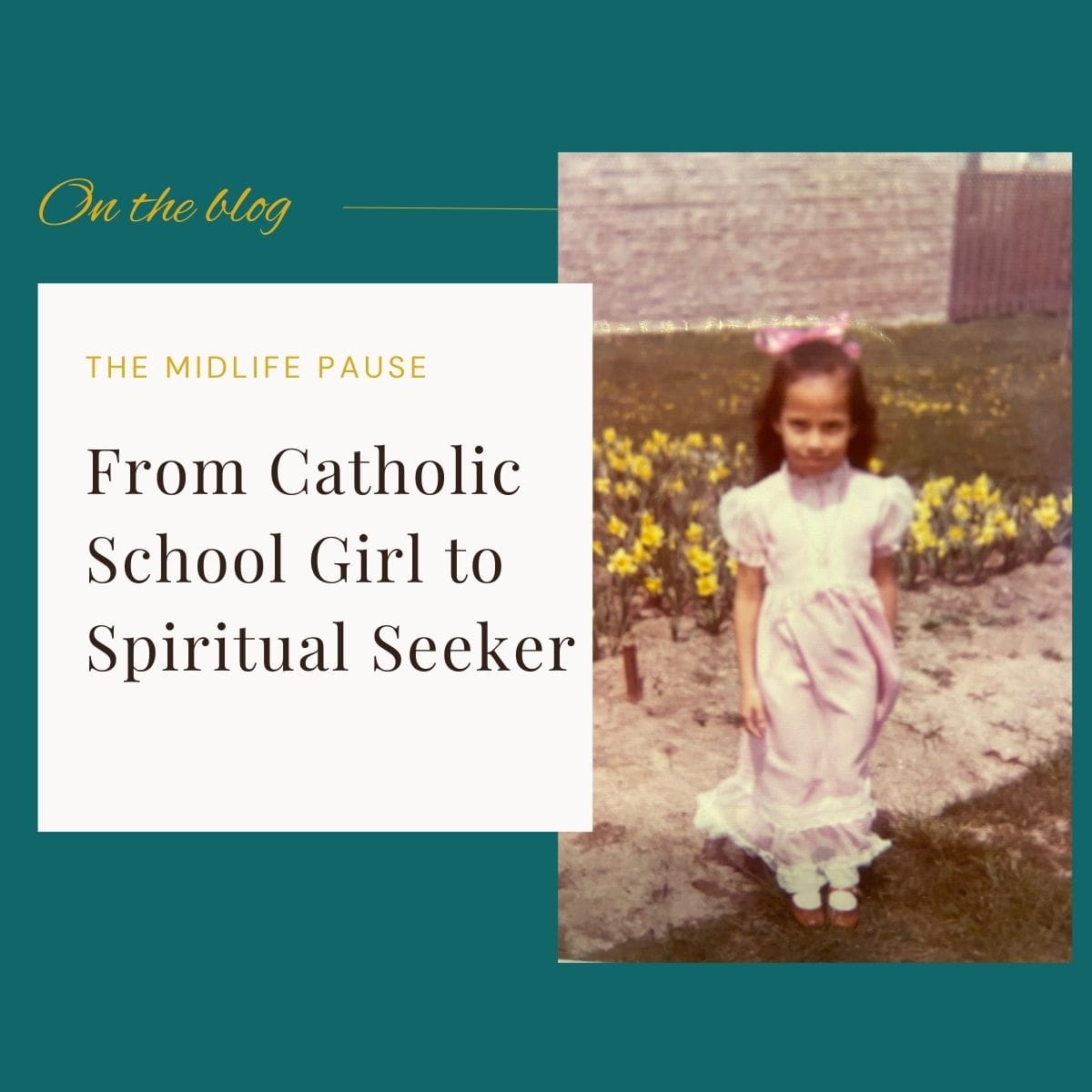My Journey of Questioning Religion and Embracing Spirituality
I’ll admit, I’ve always been a bit of a dreamer. As a child, I felt a deep connection to living things, talking to birds, flowers, trees, pet rocks, and animals of all sorts. I was born into a traditional Catholic family – Catholic school, church on Sundays, Sunday school, and First Communion.
I vividly remember the long walk to my Catholic school along the creek, past the public school across the street from our home. I often wondered why I had to walk so far when there was a perfectly good school so close. After stating my case, my parents enrolled me in the public school system, saving me from wet, cold feet, and allowing me to go home for lunch!
Why did I need someone to teach me about God when I felt His presence in everything?
For me it was logical move. Why did I need someone to teach me about God when I felt His presence in everything? We still attended church, and I joined Catholic youth groups, which were fun while instilling a good moral code.
However, in my twenties, I started questioning the church’s fundamental teachings and found myself breaking many rules, feeling shame from those in the faith. I tried to put things right, even having my son baptized in the Catholic Church. But still, much of the religion didn’t resonate with who I was becoming.Years later, through my studies of Buddhism, Thai massage, Tantra, and yoga philosophy, I found what I define as my spiritual home.
I started questioning the church’s fundamental teachings and found myself breaking many rules, feeling shame from those in the faith.
Defining spirituality from an eclectic viewpoint proved challenging in my research for this article. While I don’t consider my practice of Sri Vidya Tantra a religion, certain aspects lean towards that definition, such as texts, rituals, formal places of worship, and ceremonies. However, its primary focus is on self-fulfillment and attaining inner and outer prosperity, which aligns more with spirituality. Svadhaya (self-study) is a key component of this spiritual path. In the Sri Vidya Tantra tradition, the deity is revered as the Self or the Divine within. This non-dualistic tradition sees no distinction between individual existence and the cosmic world; they are one and the same unified reality.
In the Sri Vidya Tantra tradition, the deity is revered as the Self or the Divine within.
While religion provides a structured framework, spirituality allows for a more individualized and non-dogmatic approach to exploring the sacred and finding meaning in life
Spirituality provides a sense of wholeness, meaning and connection. It allows people to transcend their difficulties and see a broader purpose to their lives.
In John Fisher’s “The Four Domains Model,” he describes five types of spirituality:
- Humanistic – Focusing on the human spirit, without a higher power.
- Unmoored – Focusing on energy, connection with nature.
- Moored in Eastern religions
- Moored in Western evangelical religions
- Moored in Western conservative religions
These five types could be grouped into three broader categories:
- God-oriented spirituality
- Worldly/nature-oriented spirituality, emphasizing ecology
- Humanistic spirituality, emphasizing human potential and achievement
One definition describes spirituality as the human quest for connectedness with something larger than our egos—with our souls, with one another, with history and nature, with the winds of the spirit, and with the mystery of being alive.
Another functional definition states that spirituality involves a person’s awareness of inner feelings and beliefs that give life purpose, meaning and value. It helps individuals live at peace with themselves, love others and the environment. For some, it involves an encounter with God or a transcendent reality, within or outside of organized religion. For others, it does not involve the supernatural.
Spiritual health as a core part of overall well-being. It affects and is affected by all other areas (physical, mental, emotional, social, work).
Fisher describes spiritual health as a core part of overall well-being. It affects and is affected by all other areas (physical, mental, emotional, social, work). It involves living in harmony across these four domains:
Personal – Relating to yourself and finding meaning, purpose and values in life. Self-awareness drives your search for identity and self-worth.
Communal – The quality of your relationships with others, involving morality, culture and religion. Expressed through love, forgiveness, trust, hope and faith.
Environmental – Not just caring for the environment, but a sense of awe and oneness with nature for some.
Transcendental – Relationship with something/someone beyond the human level, like a cosmic force, transcendent reality or God. Involving faith, adoration and worship.
This definition shows spirituality as dynamic and interconnected. Inner harmony comes from intentionally developing self-awareness, so your inner self aligns with your outer expressed meaning, purpose and values. Personal challenges, not just meditation, can prompt this self-development.
Inner harmony comes from intentionally developing self-awareness, so your inner self aligns with your outer expressed meaning, purpose and values.
And so as I continue my winding path of spiritual exploration, I’d conclude that I’m into nurturing the 4 domains of spiritual health. These days, you’re more likely to find me on a yoga mat or getting a Thai massage than in a church pew. But you may also hear me belting out my favourite church hymn, “Make Me a Channel of Your Peace”.
To me, true enlightenment doesn’t mean your have to completely go off the beaten path. It’s about forging your own unique connection with the divine. Spirituality, like life itself, is a journey without a final destination. And I’m enjoying every step of getting delightfully, blissfully amazed along the way, treasuring my sweet conversations with the trees, flowers, bees and birds.
with love,
Lisa
Acknowledgements: Fisher, J. The Four Domains Model: Connecting Spirituality, Health and Well-Being. Religions 2011, 2, 17-28. https://doi.org/10.3390/rel2010017
